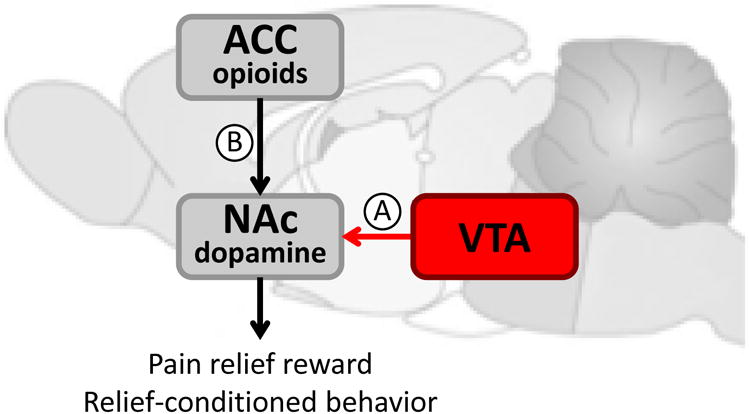Figure 3.

Proposed circuitry for pain relief reward signaling. (A) Activation of VTA dopamine neurons and phasic dopamine release in the NAc occur within milliseconds following the termination of an acute noxious stimulation and may therefore represent a reward signal for pain relief. Relief-conditioned behavior is dependent on activity in the striatum. (B) Relief of ongoing pain can also be considered a reward. In animals, relief of ongoing pain produces CPP that is dependent on dopamine release in the NAc. This effect, however, involves increased tonic dopamine levels in the NAc. Opioid activity in the ACC is both sufficient and necessary for tonic DA increases and CPP in injured animals. Therefore, ACC opioid activation is functionally linked to dopamine release in the NAc to promote pain relief-motivated behavior. Exact neuronal connectivity for the pain relief reward signal remains to be determined.
